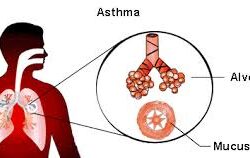Asthma and Respiratory Diseases
Asthma has two main components that make it tough to breathe: inflammation (swelling and excess mucus build-up in the airways) and airway constriction (tightening of the muscles surrounding the airways). Treating both components of the disease is necessary for many patients to achieve optimal asthma control and to help prevent symptoms, including coughing, wheezing, shortness of breath, and chest tightness. Whether mild or life-threatening, these symptoms can interfere with sleeping and disrupt daily life.
Asthma can occur at any age, although it most often begins early in life. Young children who have frequent respiratory infections and episodes of wheezing are at the highest risk of developing asthma that continues beyond age six. Other risk factors include having eczema (an allergic skin condition), or parents who have asthma. Physicians diagnose asthma based on medical history, a physical exam, results from lung function tests, and other measures.

